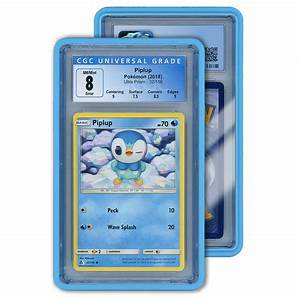Solar panels consist of a series of silicon cells that are assembled together. Typically, a 3 kW solar panel contains 60 or 72 cells.
The cells are either monocrystalline or polycrystalline. Mono cells are one solid crystal, while poly cells use a group of individual shards of silicon melted together. Visit https://www.ellingsonsolarmt.com to learn more.

When sunlight hits the cells inside a solar panel, packets of energy called photons are absorbed. These cause the cells to become excited and start vibrating. This process, known as the photovoltaic effect, converts the energy into an alternating current that creates green electricity. The green electricity is then fed into your home’s power system through an inverter.
There are many types of solar panels on the market, including monocrystalline and polycrystalline. Each type of solar panel has its own unique qualities that make it a great choice for different situations, but they all work the same way.
Whether they’re a monocrystalline or polycrystalline solar panel, each one is made up of multiple silicon cells. These cells are sandwiched together and soldered to form the solar panel, creating a complete unit that produces electricity from the sun’s rays.
Monocrystalline solar panels, also referred to as mono-crystalline or single-crystal, are a premium option for customers looking for the best solar panel for their home. They are more expensive, but they offer better efficiency and longer lifespans than other types of solar panels.
Polycrystalline solar panels, on the other hand, are less expensive but have a lower efficiency. This is because they are not created from a single crystal and instead are melted, treated and molded into uniform rectangles. These are then sawed into paper-thin wafers, which are then soldered to create the solar panel.
Another alternative is thin-film solar panels, which are a very popular option for residential customers. Thin-film solar panels use a layer of semiconductor material like copper indium gallium diselenide (CIGS), cadmium telluride (CdTe) or gallium arsenide (GaAs). These are then backed by an inexpensive substrate, such as glass or metal, and are laminated onto a backing sheet.
Another new technology in the solar industry is spray-on solar panels. This is a form of solar technology that can be applied as a film on the surface of virtually any object, including windows, roofs and cars. Ultimately, it could even be incorporated into clothing, allowing consumers to produce electricity while they’re out and about.
The Frame
Solar panels (or photovoltaic cells) produce electricity by harnessing the Sun’s rays. Each panel consists of individual silicon cells that are grouped together to create an array. The solar panel frame supports and protects these photovoltaic cells to help ensure their long-term performance.
Each individual cell consists of two layers of silicon that are sandwiched together. An upper layer is infused with phosphorus for a negative charge while the bottom layer contains boron for a positive one. When light strikes the cell, electrons are energized and flow through conductive wires that funnel them to an inverter. This converts the panel’s direct current (DC) output into alternating current (AC), which can then power homes and businesses.
A panel’s orientation, or tilt, is critical to maximizing its energy production. For optimal performance, a solar panel should be tilted towards the Sun and face south or northwest, depending on the location’s latitude. The optimal tilt is also dependent on the roof’s pitch and shade analysis.
The glass that covers the solar panel frame acts as an insulator, keeping the cells cool. A protective back sheet manages heat and humidity, allowing the solar panel to perform well in different environments.
In addition to protecting the silicon, the aluminum frame provides structural integrity and durability. The metal’s anodized coating helps reduce corrosion. However, it’s important not to scratch or damage the frame, as this can weaken its ability to withstand extreme temperatures.
Depending on the panel’s design, the metal can be welded with the glass or bonded with it using an adhesive. In either case, the joint should be sealed with an appropriate waterproof sealant.
Solar panel dimensions are one of the most significant factors in determining a panel’s energy efficiency, as larger panels usually have higher efficiencies. The number of cells and the type of silicon used also affect a solar panel’s efficiency.
Some solar panels also include a monitoring system, which can provide homeowners with data about their panels’ performances, such as how much energy they are producing or whether there are any issues. This information can be gathered from a central inverter or from microinverters installed on each panel.
The Glass
Solar panels (also known as photovoltaics) use a series of cells to generate electricity. These are made from semiconductor materials such as silicon, and they produce a direct current that can then be used to power homes, offices, or remote applications. Solar cells are grouped into modules, which are then mounted into solar panels to create a complete photovoltaic system.
Solar panel efficiency depends on several factors, including cell type and design, and the way the system is positioned in its environment. Solar systems are typically placed on rooftops, but they can also be arranged into larger arrays that supply power to large industrial or commercial buildings. The solar energy collected is stored in batteries, which allow the solar system to function when the sun isn’t shining.
Each solar panel consists of silicon cells, metal frames, wiring elements, and glass. The glass casing provides protection and durability, while an insulative layer and back sheet protect the panel from heat dissipation and humidity that can reduce performance. The conductive metals in the wiring connect to the solar cells and provide a 12V output. An anti-reflective coating helps maximize sunlight absorption and boosts the panel’s output.
The solar cells generate electricity when photons from sunlight interact with silicon atoms. This phenomenon is called the photovoltaic effect, and it allows electrons to flow through the n-type and p-type layers of silicon. The n-type layer is infused with phosphorus, while the p-type contains boron. The flow of electrons between the two layers forms a circuit, which produces electricity.
Generally, a solar panel is composed of 60 or 72 individual solar cells. The more solar cells in a panel, the more powerful it is; however, each additional solar cell can add to the price tag. Polycrystalline solar panels, which are constructed of silicon shards, are less expensive than monocrystalline but aren’t as efficient. Thin-film solar panels use spraying or depositing amorphous silicon or cadmium-telluride onto metal and glass surfaces in thin films. They are lightweight and flexible, making them well-suited for curved or unconventional surfaces.
A solar panel’s lifespan is roughly 25 to 30 years. After that time, the savings a homeowner or business makes will more than offset the cost of the initial investment. Additionally, homeowners may be eligible for government rebates or subsidies, which further lower the installation costs of a solar panel.
The Wiring
Solar panel wiring is how energy travels from the panels to the inverter, batteries, the utility grid, and your home loads. It’s a critical part of a PV system, and requires properly sized wires and fuses along with careful attention to polarity, grounding, and proper cable splicing.
There are two main ways to wire solar panels: in series or in parallel. In a series configuration, the positive terminals of each solar panel connect to the negative terminals of the next. This increases voltage but keeps current (amps) constant. In a parallel configuration, the positive terminals of each panel connect to one another, increasing the total voltage but keeping current (amps) the same.
In many cases, it’s best to use a hybrid of parallel and series solar panel wiring. This allows for better voltage matching between panels, which optimizes power output. It also provides the shade tolerance of parallel wiring, so that if one or more of your solar panels becomes shaded or damaged, it won’t affect other strings in your array.
Regardless of the type of solar panel wiring you choose, it’s important to use a reputable and reliable inverter, charger, battery, and fuses. These components are crucial for converting DC electricity into usable AC power that your home appliances can consume.
Once you’ve selected the right parts for your project, you’ll need to understand how they’re connected. This will help you decide whether to use a series or parallel solar panel wiring, as well as the correct fuse and breaker sizes.
It’s also recommended that you use a solar wire management strategy, such as running cables in an organized and consolidated path, using zip ties or looping wires when they’re too long. This will reduce mechanical stress, eliminate the possibility of hot spots, and keep anyone who might walk on or around your roof from tripping over a loose wire. It will also minimize the potential for electrical fires and other serious hazards. This is a good practice to follow even after your project is complete, so that you can avoid unnecessary maintenance and costly repairs in the future.

